-
Patient and Visitor Information
- Access your healthcare information
- Privacy Statement
- Accommodation for Whānau and Family
- At the Hospital
- Going Home
- Non-New Zealand Resident
- Hospital Chaplaincy
- People You May Meet
- Personal Needs
- Visiting Information
- What To Bring
- Your Rights
- Telehealth Appointments
- Telehealth
- Communicating health information via email
- Health Conditions and Treatment
-
Health Resources
- Advance Care Planning
- Alcohol and other drugs
- Aro ki te Hā is a Whānau-led Smokefree Kaupapa for Hapū / Māmā Whānau
- B4School Checks
- Boating Safety
- Bowel Health
- Breast Screening
- Child Health
- Clinical Development
- Dental Health
- Driveway Safety
- Employment Works
- Falls Prevention
- Hepatitis C
- Hand Hygiene
- Hoki ki ngā tūāpapa – Back to Basics
- Influenza and Healthcare Workers
- Immunisation - protecting your whakapapa
- Immunisation Whooping Cough
- Living our Values
- Mana Ake [Mental Health Support for Children]
- Measles
- Meningococcal Disease
- Mental Health
- Northland Health Services Plan
- Renal Health - Recipe Book
- Resource Unit
- Rheumatic Fever
- Safe Sleep and Unexpected Death in Infancy (SUDI) Prevention
- Shared Care - Whānau Tahi
- Sexual Health - Services
- Suicide Resources
- Water Safety
- Whānau Pack
- Minor Health Conditions Service
- MyWai
- Sexual Health
-
Healthy Environments
- Alcohol & Liquor Licensing
- Drinking Water Assessment Unit
- Food Safety
- Physical Environments
- Shellfish Safety
- Ship Sanitation and Port Health
- Smokefree Compliance: Environments and Enforcement (Tobacco and Vape)
- Swimming Water Quality
- Early Childhood Education Centres - Health and Safety Assessments
- Solaria (Sunbeds)
- Healthy Lifestyles
- Find a provider
- Organ Donations and Transplants
- Northland DHB Health Needs Assessment
- Community Clinics
- National Public Health Service – Northern Region
Toxic Algal Blooms
Marine biotoxins are toxic chemicals released from various species of marine phytoplankton. These chemicals may then enter the marine food chain through the shellfish or other filter feeders and pose a health risk to humans who eat the contaminated seafood.
Phytoplankton are microscopic organisms that exist in the top layers of the oceans. Sometimes for unknown reasons, these growths will undergo a population explosion and create a “bloom” where the normally invisible phytoplankton cells may be in such numbers as to show a patchy green, brown or red colouration in the sea.
Not all phytoplankton produce biotoxins and the potentially toxic ones are well known, can be identified in the laboratory and their toxic effects on humans and animals are known. Sites around the coastline of Northland are monitored weekly for signs of toxic algae by Northland DHB Shellfish programme team.

Gathering of wild shellfish or kaimoana from areas affected by toxin algal blooms is dangerous. Warnings of toxic algae are issued by DHB staff and advertised on local radio stations and newspapers or you can phone the local public health service for further information.
Cooking of shellfish gathered from areas affected by toxic algal bloom, does not kill the poisons and can be very dangerous if eaten by people or animals.
Click here for WARNING MESSAGES.
Last modified:
-
Patient and Visitor Information
- Access your healthcare information
- Privacy Statement
- Accommodation for Whānau and Family
- At the Hospital
- Going Home
- Non-New Zealand Resident
- Hospital Chaplaincy
- People You May Meet
- Personal Needs
- Visiting Information
- What To Bring
- Your Rights
- Telehealth Appointments
- Telehealth
- Communicating health information via email
- Health Conditions and Treatment
-
Health Resources
- Advance Care Planning
- Alcohol and other drugs
- Aro ki te Hā is a Whānau-led Smokefree Kaupapa for Hapū / Māmā Whānau
- B4School Checks
- Boating Safety
- Bowel Health
- Breast Screening
- Child Health
- Clinical Development
- Dental Health
- Driveway Safety
- Employment Works
- Falls Prevention
- Hepatitis C
- Hand Hygiene
- Hoki ki ngā tūāpapa – Back to Basics
- Influenza and Healthcare Workers
- Immunisation - protecting your whakapapa
- Immunisation Whooping Cough
- Living our Values
- Mana Ake [Mental Health Support for Children]
- Measles
- Meningococcal Disease
- Mental Health
- Northland Health Services Plan
- Renal Health - Recipe Book
- Resource Unit
- Rheumatic Fever
- Safe Sleep and Unexpected Death in Infancy (SUDI) Prevention
- Shared Care - Whānau Tahi
- Sexual Health - Services
- Suicide Resources
- Water Safety
- Whānau Pack
- Minor Health Conditions Service
- MyWai
- Sexual Health
-
Healthy Environments
- Alcohol & Liquor Licensing
- Drinking Water Assessment Unit
- Food Safety
- Physical Environments
- Shellfish Safety
- Ship Sanitation and Port Health
- Smokefree Compliance: Environments and Enforcement (Tobacco and Vape)
- Swimming Water Quality
- Early Childhood Education Centres - Health and Safety Assessments
- Solaria (Sunbeds)
- Healthy Lifestyles
- Find a provider
- Organ Donations and Transplants
- Northland DHB Health Needs Assessment
- Community Clinics
- National Public Health Service – Northern Region
